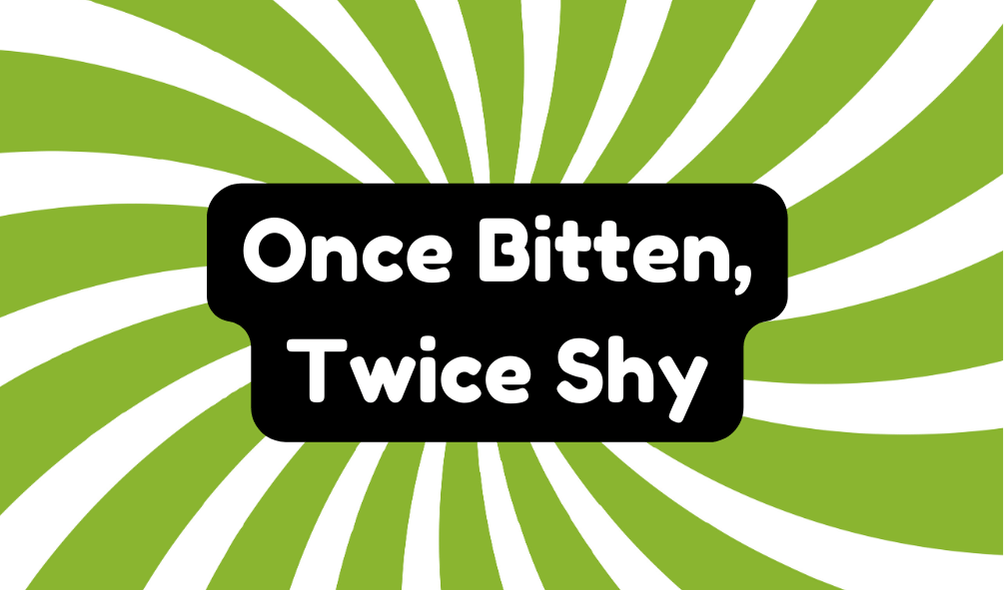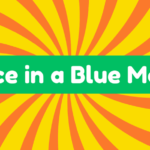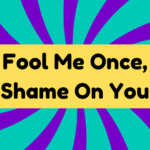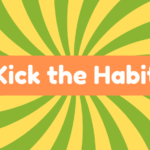"Once bitten, twice shy" illustrates how past negative experiences lead to increased caution in similar situations. This phrase reflects a common emotional response where individuals become hesitant or apprehensive, often avoiding risks to prevent repeating past mistakes. Such cautiousness, while rooted in experience, can stifle opportunities for growth and innovation. The balance between prudence and hesitation is delicate, influencing decision-making. Understanding this phenomenon can shed light on behavior patterns shaped by adversity. More insights await those curious about its implications.
Synonyms
When exploring the phrase "once bitten, twice shy," one encounters a range of synonyms that capture the idea of heightened caution stemming from previous negative experiences. This linguistic exploration reveals cautionary tales that warn against repeating mistakes. Key synonyms include:
- Overcautious
- Hesitant
- Timid
- Apprehensive
These terms reflect how past experiences can shape behavior, promoting a mindset focused on avoiding potential pitfalls. While such caution can be beneficial, it may also hinder innovation, as excessive fear of the past can stifle new opportunities and growth. Ultimately, awareness of this balance is vital.
Example of Sentences
Crafting sentences that illustrate the phrase "once bitten, twice shy" reveals how past experiences inform future decisions. This expression embodies the psychological impact of fear rooted in previous interactions. Consider these personal experiences that emphasize this concept:
- "After failing to secure the project, Sarah hesitated to propose new ideas, once bitten, twice shy."
- "Following a disastrous date, Jake remained wary of romance, once bitten, twice shy."
- "Having endured a painful job loss, Emily approached new employment cautiously—once bitten, twice shy."
- "After a negative landlord experience, Mark thought twice before renting again, once bitten, twice shy."
Each example showcases how caution emerges from past setbacks.
Origin
The phrase "once bitten, twice shy" carries a history that reflects human behavior regarding fear and caution. Its exact origin remains uncertain, although it likely connects to the experience of a biting dog, promoting future hesitance. Historical usage can be traced to a 1484 translation of Aesop's fables by William Caxton, illustrating the psychological impact of betrayal. Below is a table that summarizes its evolution:
| Year | Source | Context | Usage Example | Psychological Impact |
|---|---|---|---|---|
| 1484 | Aesop's Fables | Caution after betrayal | "Trust once, but not again." | Heightened vigilance |
| 1894 | Modern adaptation | Broader interpretation | "Avoid risks post-failure." | Influences future behavior |
| N/A | Folk sayings | Common cautionary advice | "Think twice after a setback." | Legacy of learned caution |
| N/A | Pop culture | Daily conversations | "Learned my lesson the hard way." | Awareness of repeated mistakes |
| N/A | Psychosocial studies | Understanding human behavior | "Past fears shape present choices." | Building emotional resilience |
Collocations
Collocations related to the phrase "once bitten, twice shy" reveal the nuances of caution and hesitance stemming from past experiences. They illustrate how cautionary tales often teach valuable lessons but can also lead to excessive hesitation. Key collocations include:
- Cautionary approach to new opportunities.
- Lingering doubt after a negative experience.
- Heightened awareness of potential risks.
- Reticence towards familiar activities.
These collocations highlight how past experiences can shape future decisions, reflecting a blend of wisdom and skepticism. It becomes evident that while caution can protect, it may also stifle innovation and growth if not balanced appropriately.
How to Use in Everyday Language
Understanding how to effectively use the phrase "once bitten, twice shy" can greatly enhance everyday conversations. This idiom serves as a reminder of cautionary tales where past mistakes lead to emotional scars. Below is a simple table illustrating contexts in which the phrase may apply:
| Context | Example Sentence | Emotion Linked |
|---|---|---|
| Professional | "After my last job, once bitten, twice shy." | Caution |
| Social | "She's hesitant to date; once bitten, twice shy." | Fear |
| Personal | "He avoids heights now; once bitten, twice shy." | Anxiety |
Using this phrase can enrich dialogue, facilitating deeper understanding of emotional resilience.
Why Is It Still Relevant Today?
In today's fast-paced world, the phrase "once bitten, twice shy" remains highly relevant, capturing the essence of human experience in maneuvering risks and uncertainties. The psychological impact of negative experiences often leads individuals to exercise caution in similar situations. This tendency, illustrated through various personal anecdotes, underscores how reluctance can stifle innovation and exploration. While being cautious can be beneficial, excessive wariness may hinder progress, echoing the balance between prudence and opportunity. Understanding this phrase's relevance today promotes awareness of the fine line between healthy skepticism and paralyzing fear, ultimately fostering informed choices in a landscape of constant change.







